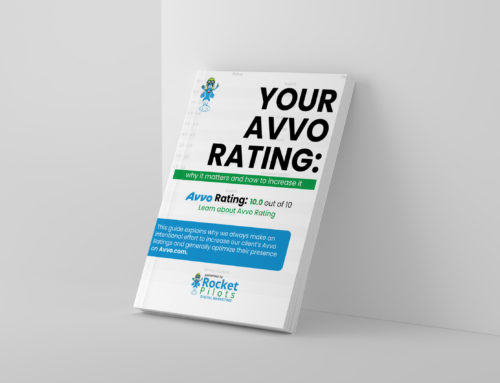Any local law firm is effectively a small business. While you provide highly specialized services to your clients, you operate under the basic tenets of brand building. Maintaining a healthy roster of clients keeps your business afloat. Generating leads and bringing new clients through the door is how your business grows.
Google, the undisputed leader in all things search, offers a powerful tool called Local Services Ads (LSA) to help connect your law practice with those individuals seeking your expertise. Available to a wide swath of legal specialties, the service allows you to market your practice without employing the large scale marketing blitz typically reserved for bigger firms.
It ensures your local practice gets in front of local clients – at the very top of Google’s search engine results page (SERP). Along with a Google My Business account and Google’s Screened function, your firm is easy to find and identified as a trusted source for legal services.
What are Local Services Ads?
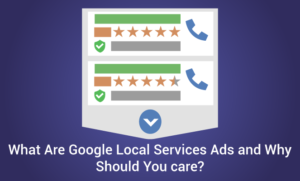
To fully understand just how big of a deal Google Local Services Ads is, and by extension, its Google Screened function, it helps first to understand the layout of Google’s SERP.
Sure, it’s a bit basic, and upon typing “real estate attorney dallas’ in Google Search, it’s a good bet you already know what’s coming.
The first four results are the rotating paid ad listings, classified as pay per click (PPC) advertising. Just below that is the Google My Business listings, which include a local map of area service relevant to the search, top-three organic listings and sometimes a paid ad.
Side Note: If you haven’t already set up your free Google My Business page, it is an absolute must to ensure your practice is part of these local listings. It also makes it easier to establish your LSA account.
Just below the local listing section, you may see some other Google SERP Features like Features Snippets. That’s followed immediately by the Holy Grail of SEO – the first ten organic results from the original “real estate attorney dallas” query. To be here means you’re doing everything right in your marketing and SEO efforts.
However, notice what many of those organic listings are – directories. Not that a directory is bad per se, but the resources behind those listing services are considerable. Cracking the top ten organic listings against those or larger, resource-rich firms requires considerable time and effort.
Not that it can’t be done, but it’s a big uphill climb.
Below the final organic listing is an additional set of PPC ads and search suggestions courtesy of Google.
Now, let’s change our query up a bit and type in “personal injury attorney dallas” in the search bar.
Notice anything different?
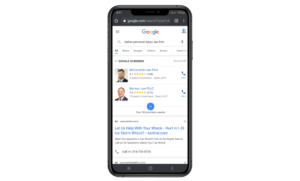
At the very top of the SERP are three sponsored “Google Screened” listings. This is Google’s Local Service Ads.
Benefits of Local Services Ads
Similar in some ways to the standard PPC ads, LSAs are paid ads. However, some key distinctions make the LSAs far more impactful to your firm’s attempt to reach new clients.
Most notable is the prominent location of the LSA, the very top of the SERP. The other primary difference is that LSAs are pay per lead instead of the pay per click approach of a standard paid listing. That means you pay only for the leads relevant to your law practice and the services it provides.
Beyond those major points, LSAs are relatively easy to create. You have the opportunity to develop trust with potential clients through the Google Screened function at no cost. LSAs are straightforward in their functionality, too.
Upon an individual clicking your specific LSA, they are taken to a standalone page where your law firm’s information is the only thing they see. No competing attorneys or firms, just your practice’s contact information, overview, services you provide, featured attorneys, ratings, reviews, and photos. It’s only when you scroll to the very bottom of the page – past all of your information – is when you see a suggestion for competing firms.
Finally, when a potential client reaches out, it could be a genuine, direct lead through phone or message request. Notifications come via email and the LSA app, and it’s your lead to work and convert into a client.
First Steps
Since Local Services Ads aim to connect businesses with local customers – at the community, city, county, or regional level – eligibility is limited to only certain service categories. The most obvious are appliance repair, cleaning, home improvement or landscaping, or personal services like photography.
Law services make up the largest segment of businesses that are eligible to use the LSA. As of the start of 2021, the types of attorney services currently available include:
-
- Bankruptcy lawyer services
-
- Business lawyer services
-
- Contract lawyer services
-
- Criminal lawyer services
-
- Disability lawyer services
-
- DUI lawyer services
-
- Estate lawyer services
-
- Family lawyer services
-
- Immigration lawyer services
-
- IP lawyer services
-
- Labor lawyer services
-
- Litigation lawyer services
-
- Malpractice lawyer services
-
- Personal injury lawyer services
-
- Real estate lawyer
-
- Tax law services
- Traffic lawyer services
After determining your practice’s eligibility, it’s a straightforward process to sign up and create your profile.
Creating Your Profile
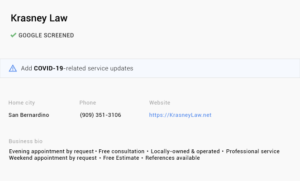
If you’ve previously set up a Google My Business account, the Local Services set up will appear familiar. However, the latter process features more detail, so it’s critical to fully complete the process to take advantage of your LSA.
To get started, your profile includes business name, phone number, website, and owner’s name. You’ll also specify if yours is a business people can visit in person. If so, it can appear on Google Maps and be available for search. Additionally, you should include the total number of attorneys and year founded.
Finally, you’ll fill in your address details and clarify your service area. Depending on your business location, you could be competing against hyper-local businesses or those in a wider region. For instance, looking back at our personal injury lawyer example for Dallas, the top three results on the SERP were Dallas-based firms.
However, upon clicking the “More Personal Injury Lawyers,” you’ll find the list includes outlying suburbs such as Frisco, McKinney, and even the city of Fort Worth, roughly an hour away. It’s important when setting up the service area that you take into account your specific region to capture nearby places, even separate towns or cities that are nearby.
Next, define your service types, complete your business hours, and review your profile.
Google Screened
Once you’ve set your profile, it’s time to become Google Screened. There are a few steps to this process, but it’s well worth the effort.
For one thing, you can’t utilize LSAs unless you complete the Google Screened process, which includes clearing a background check. You must also earn a customer rating or review score over 3 to earn the Google Screened badge. The badge – a green checkmark – signifies your firm’s background and licenses as verified by Google.
The entire verification process is free. However, it can take 2 to 6 weeks to complete the screening (the larger the firm, the longer the verification process as each of your practicing attorneys are screened). Google guides you through the steps, which include:
-
- Adding a headshot (the primary identifier for your ad)
-
- License information
-
- Background check
-
- Inclusion of customer reviews that link from your Google My Business account
-
- Bidding and budget (see below)
-
- Your billing information
- Adding additional lawyers who work for your firm (again, along with the principals or primary owner, each practicing attorney requires a background check)
Although the entire setup can prove time-consuming, it’s worth reiterating that it can prove highly lucrative for your law practice. You’ll find the LSAs are very dynamic ads. Between the essential business information and the more thorough screening process, the end result features:
-
- Attorney or practice name
-
- Phone number
-
- Location
-
- Reviews and an average star rating
-
- Total number of reviews received
-
- Business hours
-
- Google Screened Badge
-
- Photos, both your main headshot as well business photos or photos of your office location
- A bio of your firm, including history, specifics of your practice, and other worthwhile information
Coupled with your Google My Business listing, adding an LSA provides your practice with a prominent presence on an increasingly locally-focused search engine.
Budgeting Process
Let’s now cover the ad budgeting process for your Local Services Ad. As previously noted, one of the significant distinctions for an LSA is that while it is a paid ad, it’s pay per lead, not pay per click.
Effectively, you’re bidding leads that should fit your firm’s criteria. Valid leads, or those that come from potential clients by way of your LSA, include:
-
- Via a phone call (the most common form)
-
- Voicemail
-
- Email or text message
-
- Booking request
- A missed call (w/o a voicemail) returned to the potential client either by phone, email, or text message
The process for setting your LSA budget starts with developing a weekly budget based on average number of leads you hope to receive.
Recognize that while you may exceed the spend on your weekly leads average, you’ll never exceed the set monthly maximum, calculated based on weekly budget and average number of days in a month. Google will stop displaying your ad until the month resets or unless you change your budget.
Lead pricing is based on location, service provided, and lead type. You can also dispute leads you consider invalid.
*Make sure to dispute leads within 30 days or you will lose the privilege of disputing them.
Google will suggest a budget based on your profile and the average number of leads and cost per lead you’re most comfortable with.
The budgeting process allows you to see the correlation between what you’re willing to spend and the average number of leads you can expect based on ad performance. When you update your weekly budget, your monthly maximum updates as well.
Tips for Managing Your Local Services Ads
As with any other advertising source, the better you manage your LSA, the more successful it will be. Three key areas will ensure your LSA is a successful experience – responding to leads, promoting positive reviews, and striving to enhance your LSA presence.
Nurture Your Leads
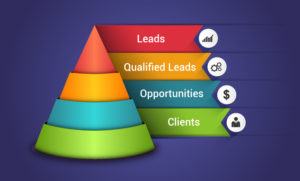
The most critical factor to ensuring your LSA proves a positive experience for your firm is responding to your leads. Google allows you to track and manage your leads through a detailed dashboard and Android or Apple apps.
As is the case with any other advertising source, the faster you respond to a lead, the more likely you’ll transition it into new business. Google also pays attention as your ad’s prominence can rise and fall based on your responsiveness.
A good rule of thumb is responding to inquiries the same business day you receive them whenever possible. After hours inquiries should get a return call, email, or text by noon the following day.
Also, remember to monitor your reports regularly and don’t be shy about disputing non-leads. Whether it’s someone seeking a service you don’t provide or a current client that happens to contact you through your LSA, Google makes lead dispute a straightforward process. Once confirmed as non-lead, your account is credited back. But, note it can take several weeks for Google to issue your credits.
Court Positive Reviews
Positive reviews are a critical part of your online presence. Nowhere is this more true than when advertising with Google. Your Local Services Ad, just like your Google My Business page, is driven mainly by the positive reviews it generates. Any review with a score above three is considered excellent.
For the LSA, great reviews help in two ways. First, you need top-notch feedback to earn your Google Screened status. Next, the higher your review score from your Google My Business page, the higher your ranking in the LSA.
As Google promotes the importance of reviews and consumer feedback, make it a point of your client follow-up to seek positive reviews from your most satisfied clients. Upon setup, if you link your Google My Business account, any prior reviews immediately count towards your LSA.
Aim High
Finally, as we demonstrated with our earlier personal injury attorney example, an important space to occupy on the SERP is one of the top three LSAs.
To move from the “More <insert law specialty> lawyers” page to the gold, silver, or bronze positions, you’ll need to stand out from the crowd – and possess a substantial budget.
As with Google’s search algorithm, several factors determine your placement in that top three LSA space, including:
-
- How someone searches for your practice (keywords, time of search)
-
- Proximity and business hours
-
- Rating from your Google My Business reviews, including exceedingly positive reviews
-
- How well you respond to leads from your LSA
-
- Positive business record, with few to no complaints registered against your firm
- How much you budget
In certain instances, you may not be able (or want to try) to outspend some larger firms. In others, proximity searches are sometimes out of your control. However, lead responsiveness and a large number of glowing reviews will go a long way to earning you a high ranking and plenty of leads, even if you maintain a modest ad budget.
Don’t fret if you’re unable to crack the top three spots with regularity. Google’s Local Services Ads still proves a massive boost to your law firms new client acquisition efforts – as long as LSA management and lead response is part of your firm’s daily marketing routine.
Law Firm Internet Marketing Services
If you need help with your law firm internet marketing, feel free to reach out for a complimentary consultation today.




